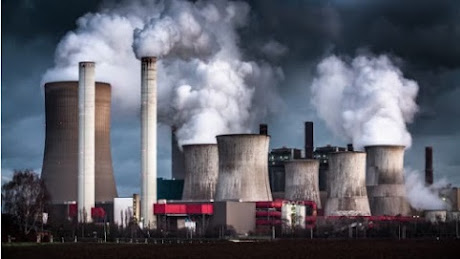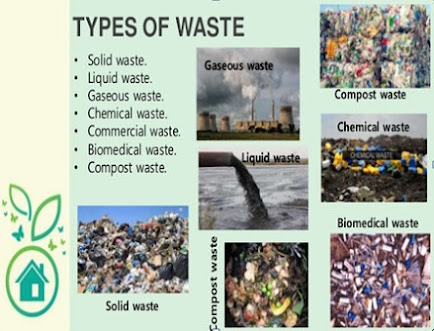Definition:
The
presence of gases, liquids, and solids in the atmosphere in high enough levels
that can harm different components of the environment including humans, living
organisms, and materials is called air pollution.
Types of Air Pollutants:
Air pollutants can be
classified into two categories.
(1) Primary Air
Pollutants
(2) Secondary Air
Pollutants
1- Primary Air Pollutants:
The harmful chemicals
which are emitted directly into the air from natural and anthropogenic sources
are called primary air pollutants.
Examples: Carbon
monoxide (CO), Carbon dioxide (CO2), Nitric oxide or Nitrogen monoxide (NO),
Nitrogen dioxide (NO2), and Sulfur dioxide (SO2).
2- Secondary Air Pollutants:
Some
primary air pollutants undergo reactions with one another and other air
pollutants in the atmosphere to form new harmful chemicals. These pollutants
are called secondary air pollutants.
Examples: Sulfur trioxide (SO3), Sulfuric acid (H2SO4), Nitric acid (HNO3) Ozone (O3), Hydrogen peroxide (H2O2), Peroxyacetyl nitrates (PANs), Nitrate (NO3-), Sulfate (SO42−) salts.
Criteria air pollutants:
The term criteria air
pollutants originated with the US 1970 Clean Air Act. That law required EPA to
set standards (National Ambient Air Quality Standards, NAAQS) to protect human
health and welfare from pollutants in ambient air. Before setting standards,
the EPA had to identify the most serious pollutants. To do so it used specific
criteria (characteristics of the pollutants, and their potential health and
welfare effects).
The six pollutants that the EPA identified to account for the large majority of air pollution, both in the United States and worldwide.
1) Carbon monoxide(CO)
2) Sulfur dioxide (SO2)
3) Nitrogen oxides (NOx)
4) Ozone (O3)
5) Particulates or
particulate matter (PM10).









No comments:
Post a Comment